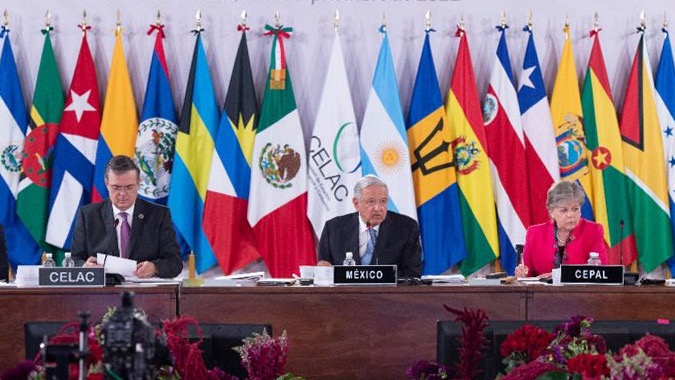Forging Safer Communities: A North & South American Guide to Community Policing
Public safety across the Americas presents a multifaceted challenge, shaped by diverse community needs and evolving societal dynamics. Traditional policing methods often fall short in addressing the root causes of crime and fostering genuine community well-being. A more effective approach—community policing—prioritizes collaboration and partnership to build safer, more resilient communities. This comprehensive guide explores fifteen key strategies for effective implementation and trust-building across North and South America.
Redefining Public Safety: The Principles of Community Policing
Community policing transcends reactive law enforcement. It's a proactive approach built on strong relationships between law enforcement and the community, fostering a shared responsibility for safety and well-being. This collaborative model addresses the underlying causes of crime, moving beyond simply reacting to incidents.
Building Bridges of Trust: Essential Steps for Effective Engagement
Trust forms the bedrock of effective community policing. Transparency and accountability are paramount. Law enforcement must actively engage with residents, demonstrating empathy, responsiveness, and a commitment to addressing community concerns. Consistent, positive interactions cultivate trust and build strong community bonds.
Embracing Diversity: Cultural Sensitivity in Law Enforcement
The Americas’ rich cultural tapestry demands culturally sensitive law enforcement practices. Officers must understand and respect diverse communities, ensuring interactions are inclusive and unbiased. This necessitates ongoing training and a dedication to understanding the unique needs of each community served.
Collaboration and Partnership: A Multi-Stakeholder Approach
Successful community policing requires collaborative partnerships. Law enforcement, community organizations, local leaders, and residents must work together, leveraging their collective resources and strengths. This synergistic approach fosters comprehensive and sustainable solutions to community challenges.
Problem-Oriented Policing: Proactive Solutions for Lasting Change
Instead of solely reacting to crime, community policing emphasizes proactive problem-solving. This involves identifying the root causes of crime and developing targeted solutions. Addressing these underlying issues prevents crime before it happens, creating safer environments for all.
Community Engagement: Active Participation in Safety Initiatives
Active community engagement is vital. Law enforcement should involve residents in decision-making, creating platforms for open dialogue and feedback. This participatory approach ensures policing strategies align with community priorities and needs.
Investing in Excellence: Training and Professional Development for Officers
Equipping officers with the skills to effectively engage with diverse communities is crucial. Comprehensive training programs focusing on cultural sensitivity, de-escalation techniques, conflict resolution, and community engagement strategies are essential. Ongoing professional development ensures continued effectiveness and adaptability.
Empowering Youth: Investing in a Safer Future
Engaging and empowering youth is a vital long-term investment in community safety. Providing positive opportunities, involving them in decision-making, and implementing mentoring programs can significantly reduce crime and foster a sense of community ownership.
Restorative Justice: Healing and Reconciliation Through Collaboration
Restorative justice practices prioritize healing and reconciliation. This approach focuses on repairing harm caused by crime, involving victims, offenders, and the community in the process. It fosters accountability and encourages solutions that benefit all involved.
Transparency and Information Sharing: Open Communication Builds Trust
Open communication fosters trust and empowers communities. Law enforcement should proactively share information, providing regular updates on crime trends and safety initiatives. Transparency builds confidence and encourages active participation in shaping community safety.
Addressing Systemic Issues: Tackling the Root Causes of Crime
Community policing must address systemic issues contributing to crime, including poverty, inequality, and limited access to resources. Addressing these root causes through collaborative initiatives creates a more equitable and safer environment for all.
Leveraging Technology: Innovative Tools for Enhanced Effectiveness
Technology plays a vital role in enhancing community policing efforts. Tools such as predictive policing, crime mapping, and community-based mobile applications improve responses to community needs and provide valuable insights.
Continuous Improvement: Evaluation and Adaptation for Optimal Results
Regular evaluation is crucial to ensure ongoing effectiveness. Feedback from residents, data analysis, and performance reviews inform adjustments and improvements to programs and strategies.
Celebrating Success: Recognizing Achievements and Fostering Community Pride
Recognizing and celebrating successes—reduced crime rates, improved community engagement—reinforces positive change and builds community morale. Celebrating achievements encourages continued collaboration and investment in community safety.
Lifelong Learning: Staying Informed on Contemporary Issues
Continuous learning about community and social development issues is essential for all stakeholders. Staying informed and actively participating in the dialogue empowers individuals to contribute to safer, more unified communities.
Conclusion: A Shared Vision for Safer Communities
Community policing, built on trust and collaboration, is a powerful tool for enhancing public safety across the Americas. By embracing these strategies, communities can create safer, more inclusive environments, fostering a stronger sense of unity and shared responsibility for well-being. The future of public safety lies in fostering partnerships and building strong, resilient communities.
```




No comments yet. Be the first to share your thoughts!